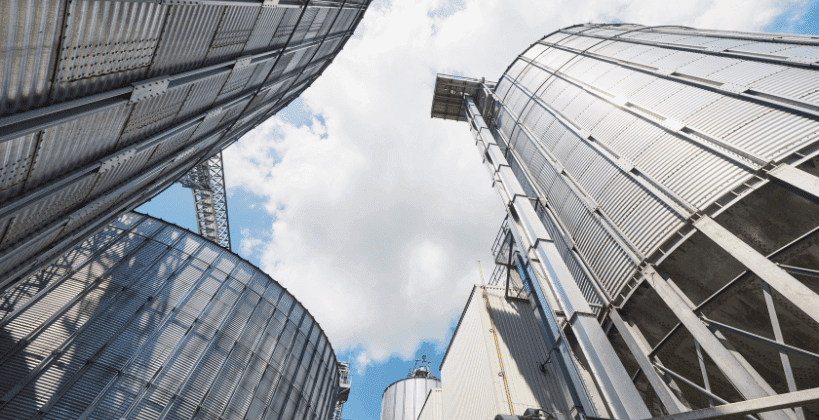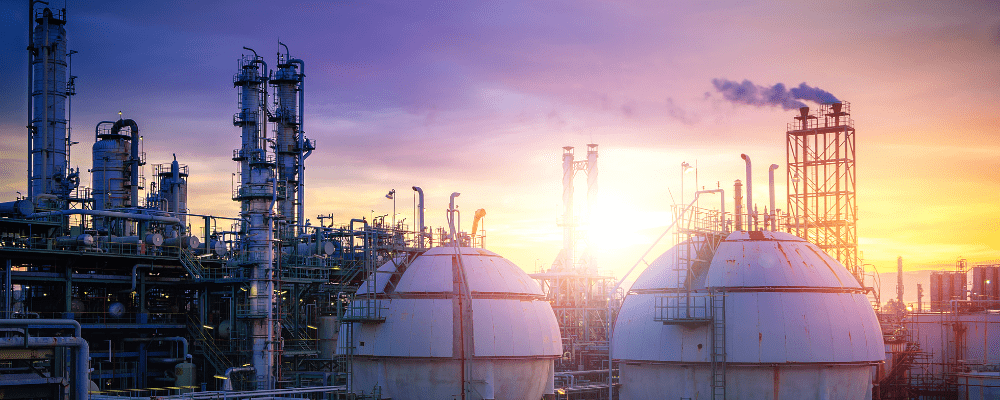As environmental regulations become stricter and cement production continues to grow globally, the need for efficient and reliable dust collection systems has become critical. Cement manufacturers are not only focused on meeting emission standards but also on improving energy efficiency, minimizing downtime, and reducing overall maintenance costs.
Dust collection systems have evolved from being just compliance tools to essential components of plant strategy. They play a key role in ensuring smooth operations, protecting equipment, and supporting sustainability goals. This guide explores the most advanced dust collection technologies available today, the latest industry trends, and why Intenzivní filtr Himenviro remains a trusted global leader in dust filtration for cement plants.
Why Dust Collection is Critical in Cement Manufacturing
Cement production—from raw material handling and crushing to kiln operations, clinker cooling, and final grinding—is an inherently dust-intensive process. Without proper control measures, the resulting airborne particulates can pose significant risks to the environment, worker health, and equipment integrity.
An effective dust collection system is essential for modern cement plants, serving multiple strategic functions:
- Soulad s předpisy: Ensures adherence to stringent global emission standards, including EU directives and CPCB regulations, helping avoid penalties and operational shutdowns.
- Workplace Health & Safety: Reduces exposure to fine, respirable dust particles, creating a safer and healthier work environment for plant personnel.
- Ochrana zařízení: Prevents dust accumulation on machinery and control systems, extending equipment life and reducing unplanned downtime.
- Operational Efficiency: Optimizes airflow and minimizes pressure drops, resulting in better energy utilization and lower operating costs.
- Sustainability & ESG Alignment: Supports long-term sustainability initiatives by reducing environmental impact and helping organizations meet corporate ESG (environmentální, sociální a sociální) commitments.
Top Dust Collection Technologies for Cement Plants

With ongoing advancements in filtration materials, system design, and process engineering, today’s dust collection systems are more intelligent, energy-efficient, and space-optimized than ever before. Below, we explore the leading technologies that are setting new benchmarks in dust control for cement plants in 2025.
1. Filtry airbagu pro zpětný chod
Reverse air bag house filters remain one of the most reliable dust collection solutions for cement plants, especially in high-dust, high-temperature zones like cement kilns and clinker coolers. Their robust construction and efficient cleaning mechanism make them ideal for continuous, heavy-duty operations.
Key Features:
- Modular Design: Easily scalable and adaptable for both new installations and plant retrofits.
- Energy-Efficient Cleaning: Utilizes reverse air flow for filter regeneration, reducing energy consumption.
- Extended Filter Life: Designed to minimize wear and tear, lowering maintenance frequency and replacement costs.
- Nepřetržitý provoz: Capable of round-the-clock performance without interrupting plant processes.
Why Cement Plants Choose It:
Reverse air bag houses are valued for their durability, low lifecycle costs, and ability to maintain stable performance under demanding conditions. Their combination of efficiency and flexibility makes them a preferred solution for long-term dust control in cement manufacturing.
2. Electrostatic Precipitators (ESPs)
Electrostatic Precipitators are highly effective in capturing fine particulate matter from large volumes of exhaust gas, making them a preferred solution for cement plant applications such as preheaters and kilns. Their ability to maintain high collection efficiency with minimal energy input makes them a valuable asset in dust control strategies.
Key Features:
- Exceptional Collection Efficiency: Achieves up to 99.9% removal of fine dust particles.
- High Gas Handling Capacity: Efficiently manages large gas volumes with minimal pressure drop.
- Low Maintenance Design: Few moving parts lead to reduced wear, lower maintenance needs, and increased system reliability.
- Quiet and Robust Operation: Ensures long-term durability with low operational noise.
Why Cement Plants Choose It:
ESPs are especially suited for high-temperature applications where fine dust must be captured without disrupting upstream thermal processes. Their high efficiency, low operating costs, and reliable performance make them a strong choice for emission control in critical process areas.
3. Hybrid Filters
Hybrid filters combine the strengths of Electrostatic Precipitators (ESPs) and fabric bag filters to deliver exceptional dust collection performance, especially for ultra-fine particles. This dual-stage filtration approach ensures high efficiency even under fluctuating process conditions, making it an advanced solution for modern cement plants.
Key Features:
- Enhanced Collection Efficiency: Effectively captures a wide range of particle sizes, from coarse to submicron dust.
- Process Flexibility: Adapts well to varying dust loads, temperatures, and operating conditions.
- Longer Filter Life: Reduced wear on filter media leads to extended service life and lower operating costs.
- Retrofitting Advantage: Ideal for upgrading older systems to meet stricter emission norms without major layout changes.
Why Cement Plants Choose It:
Hybrid filters offer the best of both technologies—electrostatic precharging and mechanical filtration—making them a versatile and future-ready solution for plants aiming to enhance performance and comply with evolving environmental regulations.
Why Intensiv Filter Himenviro is a Global Leader in Dust Filtration
With over 100 years of innovation in air pollution control, Intenzivní filtr Himenviro has earned the trust of cement plants worldwide. Our legacy is built on precision-engineered, application-specific solutions that deliver consistent performance, regulatory compliance, and operational efficiency.
Our Specialized Solutions for Cement Plants Include:
- Reverse Air Bag House Systems – Engineered for reliable kiln and cooler dedusting in high-temperature environments.
- Electrostatic Precipitators (ESPs) – Tailored for heavy-duty fine dust removal with maximum efficiency.
- Pulse Jet Filters – Designed for raw material handling and grinding areas, ensuring high dust capture and easy maintenance.
- Fabric Filters – Equipped with advanced filter media for extended service life and optimized cleaning performance.
Whether for new installations or retrofit projects, Intensiv Filter Himenviro delivers turnkey dust collection systems that align with the evolving needs of modern cement production.
Why Industry Leaders Trust Intensiv Filter Himenviro
- Global Reach and Proven Performance
With over 4,500 installations across 40+ countries, we bring decades of experience in delivering reliable air pollution control systems for the world’s most demanding industrial applications. - Cross-Industry Expertise
From cement and steel to power, chemicals, pharmaceuticals, and waste management, our solutions are tailored to meet the unique needs of each sector. - Engineered with German Precision
Built on more than a century of innovation, our technologies reflect the highest standards of German engineering, ensuring unmatched quality, durability, and efficiency. - Complete Turnkey Capabilities
We manage the entire project lifecycle—from consultation, design, and manufacturing to installation, commissioning, and after-sales support—ensuring a seamless experience. - Designed for a Sustainable Future
Our systems are optimized to minimize emissions, reduce energy consumption, and support compliance with the most stringent environmental regulations.
Latest Trends in Dust Collection
The future of industrial dust collection is being reshaped by innovation. In 2025, leading-edge plants are adopting solutions that are intelligent, energy-efficient, and tailored for modern operational demands.
- Intelligent Systems with IoT Integration
Real-time data from sensors allows for continuous monitoring of emissions, filter pressure drops, and system performance, enabling predictive maintenance and minimizing downtime through cloud-based platforms. - Advanced Filter Media Technologies
New-generation filter fabrics offer enhanced filtration efficiency, extended service life, and greater resistance to temperature and chemical exposure, translating into lower operating costs and reduced replacement frequency. - Modular & Space-Efficient Designs
Modular systems are ideal for space-limited plants and brownfield upgrades, offering flexible configurations without sacrificing efficiency or airflow capacity. - Ultra-Low Emission Compliance (<30 mg/Nm³)
Modern dust collectors are engineered to meet and exceed the most stringent global emission standards, supporting compliance while maintaining operational efficiency.
How to Choose the Right Dust Collection System

When selecting a dust collection system, cement plant managers must evaluate multiple critical factors to ensure long-term efficiency and compliance:
- Gas Volume & Temperature: Accurate assessment of process gas parameters is essential for system sizing and material selection.
- Vlastnosti prachu: Moisture content, particle size, and abrasiveness influence filter media and cleaning system choices.
- Site Layout & Constraints: Space limitations, integration with existing infrastructure, and future scalability must be factored in.
- Soulad s předpisy: Systems must meet both local and global environmental standards, current and anticipated.
- Total Cost of Ownership: Energy consumption, maintenance, and operational life are just as important as upfront costs.
Na Intenzivní filtr Himenviro, our engineering-first, consultative approach ensures every solution is tailored to your plant’s unique operational conditions and ROI expectations.
Case Study: Successful Upgrade in a 1.5 MTPA Cement Plant
A prominent cement manufacturer in South Asia faced rising maintenance costs and frequent non-compliance issues with their aging Electrostatic Precipitator (ESP) system.
Řešení:
Intensiv Filter Himenviro designed and implemented a custom-engineered Reverse Air Bag House, precisely tailored to handle the plant’s high dust load and temperature fluctuations.
Key Results:
- Emission Reduction: From 120 mg/Nm³ to below 25 mg/Nm³, exceeding regulatory standards
- Airflow Efficiency: 18% improvement, enhancing process stability
- Maintenance Savings: 22% reduction in annual maintenance costs
Výsledek:
This upgrade demonstrated how investing in next-generation dust collection systems not only ensures environmental compliance but also significantly enhances operational efficiency and cost-effectiveness.
Conclusion: Make Dust Collection a Strategic Advantage
In 2025, dust control is no longer optional—it’s a strategic investment. Whether modernizing legacy systems or designing new facilities, choosing the right dust collection solution is key to achieving both regulatory compliance and peak operational performance.
Intensiv Filter Himenviro stands at the forefront of this transformation. With decades of expertise and a commitment to German engineering standards, we deliver customizable, high-efficiency solutions tailored to the evolving needs of cement plants worldwide.
Let’s build cleaner, smarter, and more sustainable plants—together.







